#lupin the iii episode 0 first contact
Photo

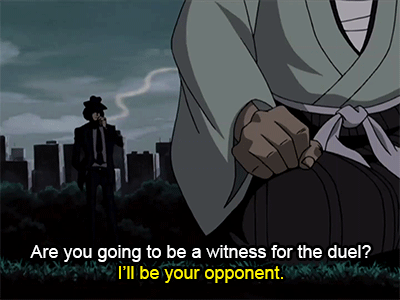

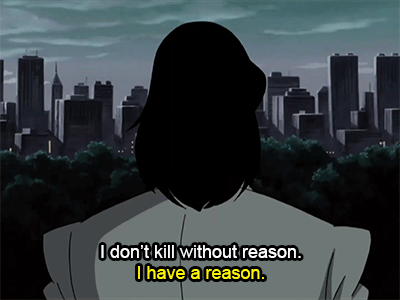
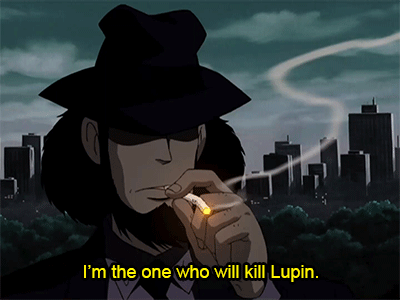


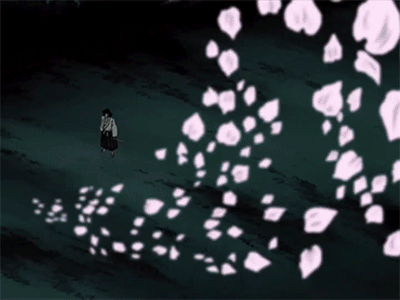
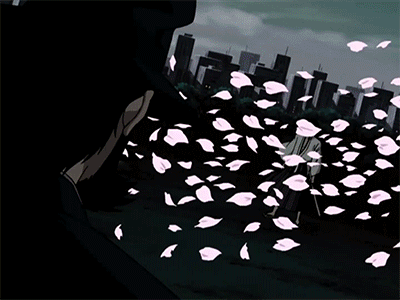

“Out of all those bullets only one of them scratched you” “That one shot could’ve been my one-way ticket to hell.”
bonus:
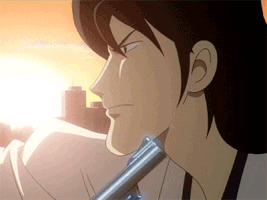
#lupin the third#lupin the iii#lupin iii#lupin the third episode 0#lupin the iii episode 0#lupin iii episode 0#lupin the third first contact#lupin the iii first contact#lupin iii first contact#lupin the third episode 0 first contact#lupin the iii episode 0 first contact#lupin iii episode 0 first contact#goemon ishikawa#goemon ishikawa xiii#daisuke jigen#jigen daisuke#edits#my edits#gifset#ouuughghghhg duels#another gifset? ya sorry#i couldnt help myself i love this scene#i want to say dont tag as ship#but i know people wont listen bc not everyone sees these tags#ill deal tbh#i love this scene tho i love goemon fighting scenes#whenever they animate full scale fights with him im always more hyped then ever#hes also handsome which helps#this scene is eye candy for me
258 notes
·
View notes
Note

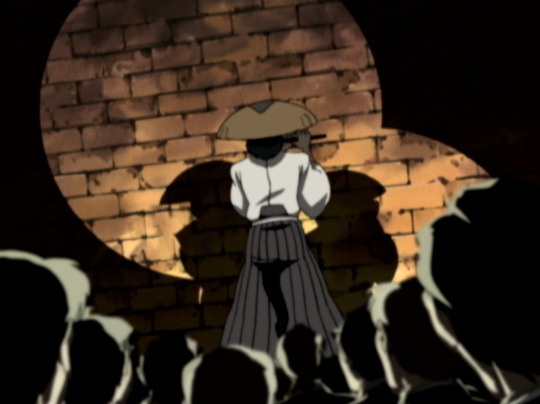

why is he like this
He has to be dramatic at least twice every movie, it's in his contract!
(Also the fact that he's literally playing his own music theme on the flute here. Also, the fact that this entire movie is just Lupin bullshitting a journalist and so he may or may not have exaggerated or even entirely fabricated Goemon's dramaticness in those scenes) (I don't know what the normal word from dramaticness is)
#lupin iii#goemon ishikawa#episode 0: first contact#i rewatched this movie like two weeks ago and i love it so much
81 notes
·
View notes
Text

Looking for something through my discord with my friend and I forgot liveblogging this to her lmao
#lupin iii#this is first contact episode 0 btw#goemon ishikawa xiii#ishikawa goemon xiii#lupin the third
66 notes
·
View notes
Text
Best of Lupin III Poll

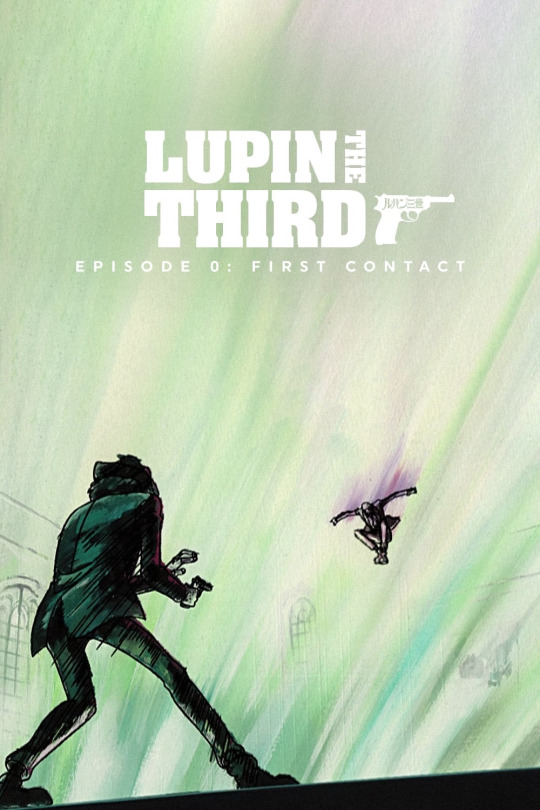
#lupin iii#lupin the 3rd#lupin the third#polls#anime#lupin the first#the first#episode 0 first contact#first contact
26 notes
·
View notes
Text
finished first contact and i absolutely love that you can tell where lupin gets too into it. like the random flowers during the duel for example. the blinding glow when goemon opens the box with zantetsuken that fills the whole room. im too tired to remember more examples but you get my point
7 notes
·
View notes
Text
Most relatable part of the movie.
#lupin the iii#lupin the 3rd#lupin the third#lupin iii#episode 0: first contact#aka 'let's all fight lupin just because he's annoying'
34 notes
·
View notes
Text
Source: Lupin The Third-Episode Zero: First Contact


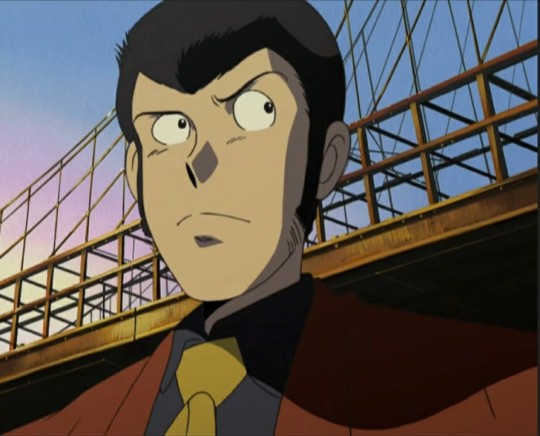
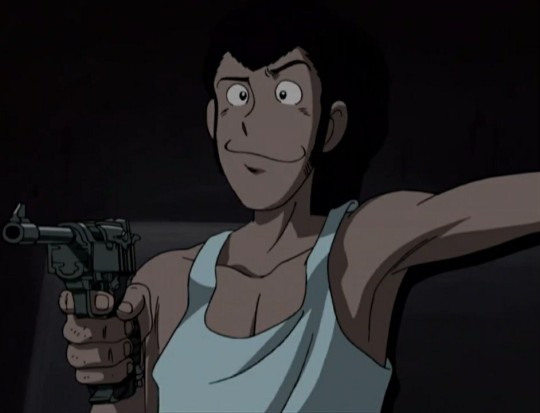
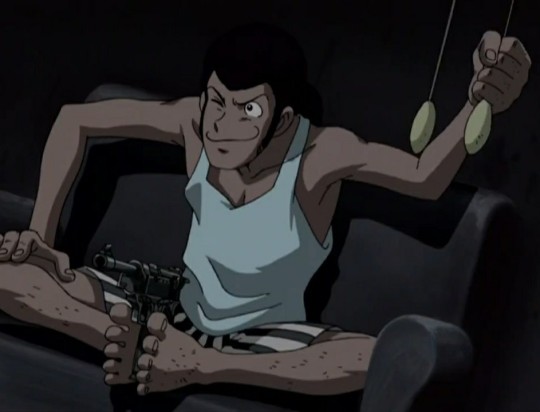

Absolutely loved the way he looked in this Special, so skronkly gsvsbjsjsdgdg 💗💗💗
#monkey punch#lupin the 3rd#lupin sansei#arsene lupin iii#lupin iii#lupin the third#lupin#arsene lupin#episode 0 first contact#my screenies
23 notes
·
View notes
Photo

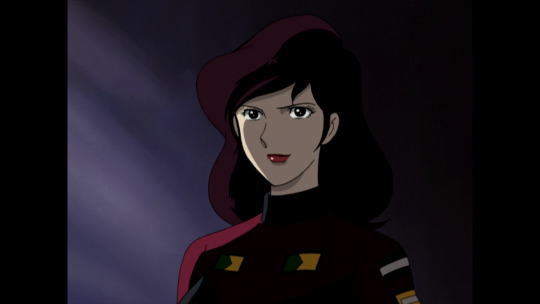
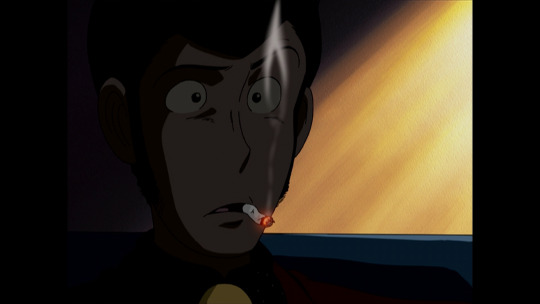
Lupin III: EPISODE 0: “First Contact”
12 notes
·
View notes
Text
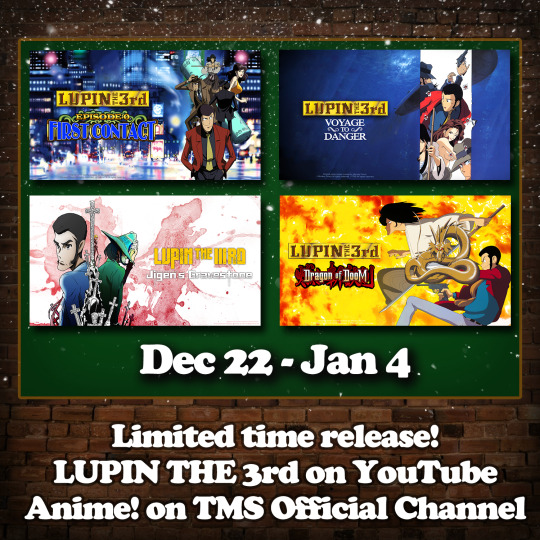
TMS Entertainment USA are celebrating the holidays in style, with a limited time release of four Lupin III feature films, and a short Part 2 Christmas marathon! 🎄🎅
Fans within the United States will be able to catch Episode 0 ~ First Contact, Voyage to Danger, Jigen's Gravestone, and Dragon of Doom for FREE on YouTube between December 22nd 2023, through to January 4th, 2024.
In addition, Japanese and English language dubbed episodes of both Part 2 Christmas capers, The Sleight Before Christmas and Christmas at Tiffany's, will also be streaming in the U.S. on YouTube this December 24th, at 13:30 PT.
If you're able to, be sure to check them out, and we hope you have a happy holidays! ☃️⭐🎁
#lupin iii#lupin the 3rd#lupin the third#anime#lupin#manga#monkey punch#lupin the iii#lupin 3rd#lupin sansei
21 notes
·
View notes
Text
Blue Watches Lupin III: Episode 0: First Contact
Hey hey, kids. Been a while since I did one of these, huh? Well, I’m in a Lupin mood, so let’s jump right back into the mapcap, action-packed, homoerotic world of my favorite monkey thief and his band of gay autistics with the fourteenth special and one of my favorite specials - Episode 0: First Contact.
Because I own this one on DVD, I’m not gonna do any screencaps. Sorry if that ruins it for some people.
The framing device for this special already gets me every time - Jigen is being interviewed by a reporter who wants to know how the Lupgang met. She’s tried interviewing Lupin himself, but all he does is hit on her. So she hits up the gay best friend that she knows won’t do that. Girl has my boy clocked and we aren’t even a minute in. Trust me, it’ll only get gayer from here.
13 notes
·
View notes
Photo

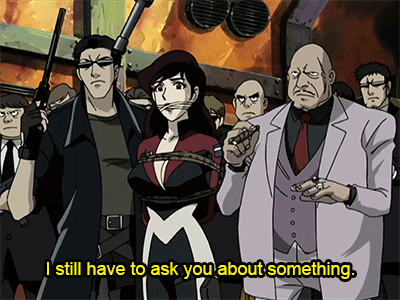
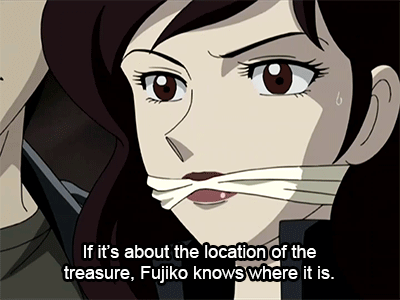
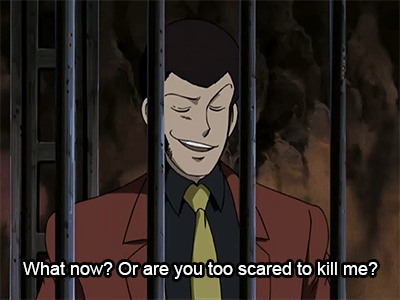
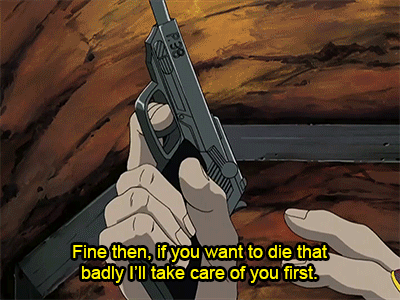
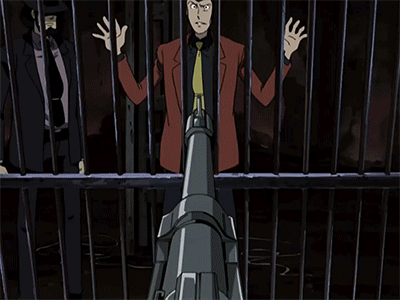
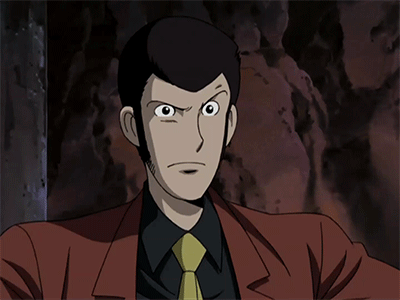

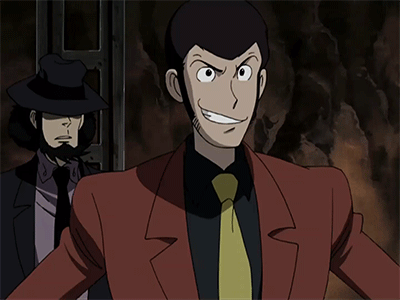
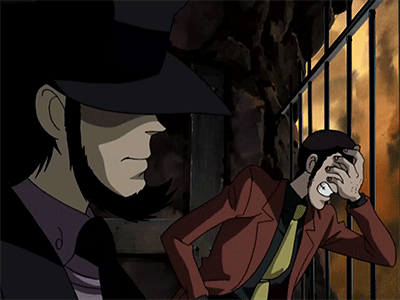
“Aim carefully.”
#lupin the third#lupin the iii#lupin iii#lupin the third episode 0#lupin the iii episode 0#lupin iii episode 0#lupin the third first contact#lupin the iii first contact#lupin iii first contact#lupin the third episode 0 first contact#lupin the iii episode 0 first contact#lupin iii episode 0 first contact#arsene lupin iii#arsene lupin the iii#arsene lupin the third#daisuke jigen#jigen daisuke#fujiko mine#mine fujiko#edits#my edits#gifset#i love this scene so much thats why i keep giffing every second of it especially goemons part#which was the last post#love how jigen is trying to kill lupin but cant stop himself from laughing#sorry yall are kindred spirits#fujiko awkwardly standing there this entire scene#i love her <3#directly after this scene goemon comees to be as dramatic as humanly possible and steal zantetsuken#i respect the grind
219 notes
·
View notes
Text

Zeni is cute (1)
66 notes
·
View notes
Text
Lupin III: Episode 0: First Contact
Fun :)
6 notes
·
View notes
Text
Best of Lupin III Poll


#lupin iii#lupin the 3rd#lupin the third#polls#anime#bye bye lady liberty#goodbye liberty crisis#episode 0 first contact#first contact
12 notes
·
View notes
Text
Bromance with a Silent B: The Lupin/Jigen Manifesto

In the halls of anime history, there’s a duo well and truly ingrained as legendary partners: the Kirk and Spock of con artists, the Holmes and Watson of hallowed heist planners, two men so inextricably associated with one another that to mention one without the other is all but unthinkable. Ladies and gentlemen, I give you Arsené Lupin III and Daisuke Jigen. No fan would question the unbreakable bond between the two. Any argument after that is only a matter of degree, time and place.
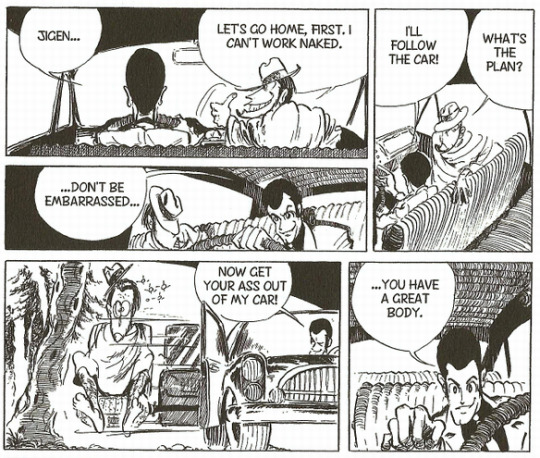
Now, when a series has been running as long as Lupin III, passing through the hands of so many formats and directorial visions, you can pretty much find fodder to feed whatever ship you like. Pick through long enough, and there’s a clip to suit your needs. This isn’t a matter of 26 episodes, or a few movies, or even a collection of manga volumes. No, we’re talking hundreds of hours of content perpetuating from the late 60s right on into the present day. And in light of that fact, we need to do a bit of structural housekeeping. Rather than attempting to analyze every piece of Lupin media, this essay will go more broad strokes with specific titles mentioned where applicable. It’s divided, for simplicity, into the following sections:
I. Three Jackets, One Gun: The Characters
II. A Wink and an Offer – Episode 0: First Contact
III. The Woman Called Fujiko Mine and Parallel Narrative
IV. Flirtation, Fidelity, and Fujiko
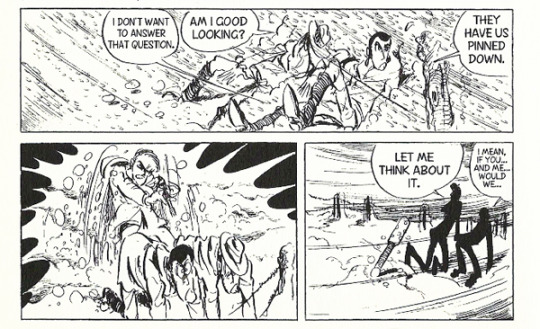
I. Three Jackets, One Gun: The Characters
Explaining Lupin III (the character or the series) is not unlike trying to take apart a pomegranate: it’s a fairly simplistic whole on the outside, but split it open and suddenly there are a million little chambers that may or may not connect to one another. However, the following can generally be taken to be true: Arsené Lupin III is a gentleman thief, a title that he’s carried (along with his name) down the generations from his famous French grandfather.

Lupin is a hyper-competent thief and master of disguise. He’s always thorough in researching his jobs, often preparing plenty of gadgets and a loyal crew to help carry off his elaborate heists. He values the thrill of theft more than the actual objects, and for that reason he delivers calling cards to his intended victims. More to that end he lives to amuse himself – a trait that, along with his nonchalance toward killing, changes its tone from series to series. It varies from the Bugs Bunny goofball of Red Jacket, to the Joker-esque capriciousness in The Woman Called Fujiko Mine, to the theatrical gentleman of The Castle of Cagliostro. Despite his skills it’s proportionately rare to see him land a treasure for keeps, for he’s often brought low by his lust for women and his inflated ego (both of which are easily manipulated by his sometimes-lover Fujiko Mine, to Jigen’s constant irritation).

Daisuke Jigen (almost certainly a pseudonym, since his backstories fairly consistently portray him as starting out under the American mafia) is Lupin’s near-constant companion and most reliable partner. While his strongest talents are as an unbeatable gunman, he’s also a skilled driver of whatever vehicle a job requires, and takes on his share of disguises when necessary. He’s also the most likely member of the team to shut down Lupin’s ego, always happy to call him on a bad decision or a prideful blunder. It would seem his past led him to cross paths with most of the world’s elite assassins, as he can always be counted to recognize the latest deadly foe that comes knocking.
Jigen is gruff and can generally be found relaxing (which has earned him the fan nickname “Lounge King”), with a sarcastic sense of humor and an easily riled temper. He’s deeply distrustful of women, which is no doubt helped by the fact that his love interests have a 99% likelihood of ending up traitorous or dead by the time credits roll (excluding the ones to whom he gets cast as a father-figure), and especially dislikes Fujiko. He’s also a chain smoker, only found without a cigarette when the danger at hand is truly serious.
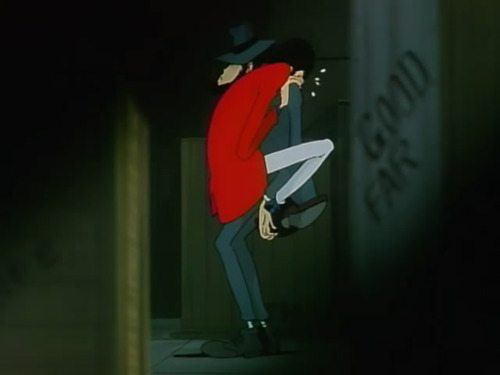
There’s no concrete timeline for how long Lupin and Jigen have worked together. One chapter of the manga cast them as childhood friends only to wave that idea aside, while the anime adaptations have offered several variations on how they came together. What is clear is that since then they’ve been inseparable. While the other members of Lupin’s gang come and go as their own goals dictate, Jigen is shown to travel and live with the thief pretty much full time.
Actually, “not concrete, but…” pretty much describes the relationship in episodes not specifically devoted to their bond. It’s all in the little things: the fact that Lupin often refers to his partner in crime as Jigen-chan, an endearment saved only for the gunman and Fujiko; the way the two can communicate elaborate plans with only a look or by speaking the other’s name; their extreme physical ease around each other, with the screenshot above hardly denting the wealth of examples (not to mention Lupin’s fairly common use of female disguises), and the pointedly seething anger Jigen displays whenever Lupin prioritizes Fujiko (a tension that fuels more than a few episodes).

Now, all of the above is well enough in itself, creating an image of an easygoing but extremely deep relationship if that’s how you’re inclined to read their interactions. But taking just the aspects mentioned above, it’s equally possible to call the relationship theory an over-interpretation of a close friendship. And when I say possible, I mean ‘the kneejerk reaction of the overwhelmingly male fanbase over the years.’ And in a way, they’re right. Those factors alone don’t sell this ship as a romance. What we need is to take a look at the beginning, since observing the structure of how the two became partners will give us a prism through which to view the interactions above.
II. A Wink and an Offer – Episode 0
For years, the Lupin canon existed in a kind of perpetual second act that was not unlike the writing of superhero comics (though attempting to form a timeline out of Lupin’s adventures in all but the vaguest of ways is asking for a headache). Unlike a superhero comic though, Lupin III (the anime) never really felt the need to offer an origin story beyond quick introductory character descriptions. Every adventure stood alone, and who the characters had been before was a matter of vague reference at best. This was true until 2002, when the TV special (an annual tradition for the franchise since 1989) Episode 0: First Contact was released. It claims to tell the story of how all four members of Lupin’s gang met, but with a catch: the story makes heavy use of an unreliable narrator as a framing device, a clever move that allows the film to tell a wonderfully outlandish and unbridled story (the contrivances needed to get all five main characters in one place at the same time must be seen to be believed), while also having a core element that feels trustworthy as ‘true.’ That core, the element which the plot returns to again and again, is Lupin and Jigen’s relationship – there are dramatic still shots emphasizing the moment the two first lay eyes on each other, their meetings bookend the story within the story, and it’s given the most narrative weight while being least connected to the necessities of the proper plot. I’ll give you a closer look at how the narrative functions, but I can sum it up pretty neatly with the following frames:
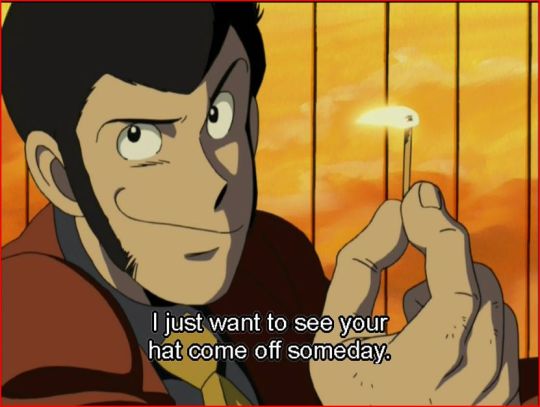


The story of First Contact is told (supposedly) by Jigen to an intrepid reporter, and begins thusly: Lupin, already a legend in the underworld, seduces his way into the mafia don’s private room (disguised quite convincingly as a woman), where half of an incredible treasure is stored. There he runs afoul of the don’s bodyguard, one Daisuke Jigen, and is forced to flee. Lupin’s informant Brad (a plot device if ever there was one) manages to nab the treasure following Lupin’s failure, only to be murdered for his troubled. From there the struggle between Lupin and the mob is on, each struggling to lay hands on both the treasure and the key that will open it.
For the rest of the film there are two narrative threads. The A Plot involves the search for the treasure, which is how we meet Fujiko (Brad’s girlfriend), Zenigata (tasked with arresting Fujiko), and Goemon (who’s also looking for the key, in that it’s his future-trademark sword Zantetsuken). The B Plot involves Jigen’s attempt to make up for failing to kill Lupin, and Lupin in turn trying to coax the gunman into teaming up with him. This aspect, hidden at the heart of a killer noir thrill ride, plays the dramatic beats of a love story (since in this case we have two men, let us call the ‘hero’ role A and the ‘heroine’ role B): the story begins by introducing its two characters, an A who has something missing in their life (Lupin cannot complete his dream robbery without a reliable partner) and a B whose special qualities stand out from the pathetic circumstances they’re currently trapped in (Jigen is easily the best gunman in the mob, and has no respect for any of them); these two meet through dramatic circumstances, starting with antagonism on B’s part and fascination on A’s (the break in and shoot out); throughout the second act the two leads are repeatedly forced together by circumstances, allowing them to develop a bond, with A trying to catch B’s attention (Lupin’s “we’re the same” speech,); the turning point comes when A does something to prove himself worthy in B’s eyes, thus prompting the beginning of a change in B’s feelings (Lupin freeing Jigen, and rescuing him from the firing squad); and in the third act, B comes to A’s rescue, and the two cement their togetherness (Jigen defends Lupin against Goemon and brings back the getaway car, which is the above scene that begins their partnership).

All of that brings us around to that final scene I showed off above. I have just enough restraint not to linger on the rather phallic imagery of the recurring cigarette lighting motif (which is, of all unexpected things, surprisingly similar to the m/m seduction subplot in Cabaret), but I do want to talk about Lupin’s dialogue. Jigen, you see, is never without his hat. Ever. The occasional rationalization is that it aids his marksmanship, but that’s so rarely brought up as to seem beside the point. This is a man to whom that one article of clothing is so defining that it’s all he needs to feel put together, even if it’s he’s totally starkers otherwise.

By that same token, not having the hat is a major crisis (disguises notwithstanding, though even those tend to incorporate a hat of some kind). And given that First Contact is loaded with callbacks to franchise lore, it’s pretty safe to assume the writers knew that hat is The Hat – an object with capital letters and major character importance. In other words, whether you interpret it as solely an emotional vulnerability thing or rope in the physical as well, Lupin is essentially stating a desire to see his newfound partner naked. That’s the line that officially concludes the story-within-a-story, bringing the audience back to the present day of the frame narrative. Oh, and one more thing about romance stories? They tend to fade out on the happily ever after note – in other words, an image or concept that the audience is meant to read as the way that relationship will proceed for the foreseeable future.
III. The Woman Called Fujiko Mine and Parallel Narrative
While the above film is pretty much the crown jewel as far as explicit focus on the ship is concerned, we’re not quite done yet. I did say that introductions were the best way to get grounding as far as where the characters were coming from, and the franchise now has two sets of prequels. Our second object of focus is 2012’s The Woman Called Fujiko Mine, a breathtaking little TV series (not to mention the first Lupin work by a female director). As the title might’ve indicated Lupin and Jigen are closer to being secondary characters in this series, but that’s not as much of a deterrent to our analysis as you might think. Y’see, Fujiko Mine is a story that’s quite interested in parallel stories and ‘what if’ scenarios, which results in a plethora of foils:, Oscar and Fujiko’s rivalry (a microcosm of Zeniagata and Lupin’s) as well as the cast’s disparate reactions to their similarly motivated breakdowns; the various victims of the memory experiments and, for this essay’s purposes, the relationship of Fujiko and Goemon as it relates to Jigen and Lupin.
Among the many other things it’s doing, Fujiko Mine is also setting the ground work (as much as is possible) for the beginning of the 1971 “Green Jacket” TV series. With that came the fact that Goemon was originally introduced as Fujiko’s boyfriend – and lucky for us,
because the burgeoning romantic interludes that the prequel series spun from that are unbelievably heartwarming. And the importance of that comes back around to the same question of structure as before, in keeping with those reflexive undercurrents in the narrative. For the overt romance subplot is once again in keeping with the pattern of interactions between our two thieves.
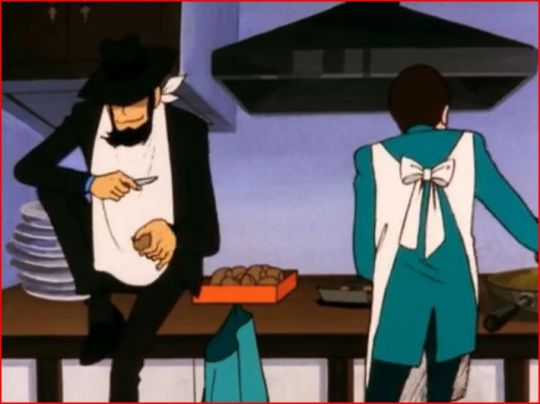

The pattern of Fujiko and Goemon’s relationship goes as follows: there is an episode where they meet and have opposing desires, but eventually are required to work together to survive. The second time they meet Goemon saves Fujiko from being captured, and then serves as backup in the goal she is attempting to carry out. After Fujiko’s mental state begins to break down, he takes her in when she has nowhere else to go, and attempts to care for her. And at their last meeting of the series, he declares her his girlfriend.
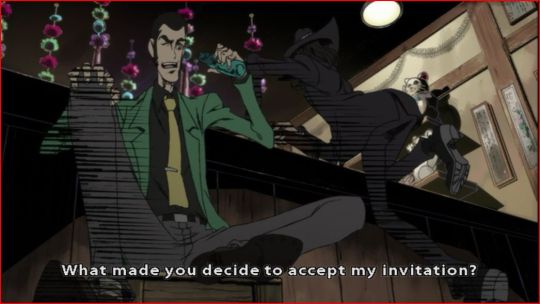
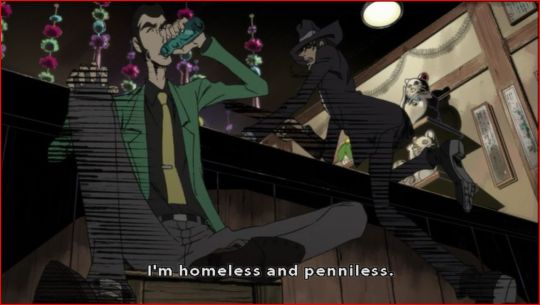
As you’ve probably already guessed from my extremely leading descriptions, Jigen and Lupin follow the same pattern: they fight over a hidden treasure in a pyramid, but must cooperate to escape the death traps; Lupin rescues Jigen after he’s arrested, and ropes him into helping with a job; since Jigen is homeless, he accepts Lupin’s invitation to help with another job (that comes with a hot springs vacation); and their final interaction of the series is yet another homage – to First Contact, if you’d believe it! Lupin’s walking on the side of the road after a job, and Jigen comes to pick him up in the same type of truck Lupin used to rescue him earlier.
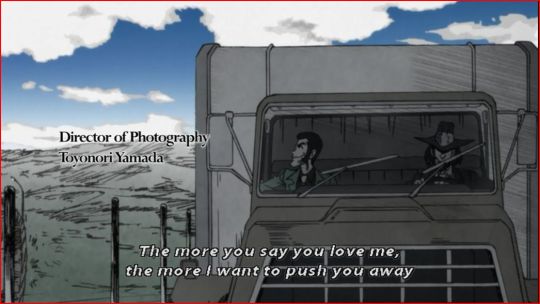
In other words, over the course of a decade we progressed from ‘here is the popular structure of romantically inclined films, to which these characters’ relationship has a number of similarities’ to ‘here is an overtly romantic relationship as defined by the universe of the series, and here are two more characters that follow the same pattern as that romance.’ It’s brought up far less often than First Contact given its comparative subtlety, but I still count it as a major moment for the relationship’s legitimacy.
IV. Flirtation, Fidelity, and Fujiko

I’ve expended a lot of energy laying out the plausibility of this relationship, but there’s one big thing that still needs to be addressed: birds fly, fish swim, Bioware games have good writing, and Arsené Lupin III love Fujiko Mine. It’s not just a canonical relationship, it’s part of the beating heart of the franchise. Trying to discount it would go way beyond blind and sail into the land of failing to understand the characters. But while the Lupin/Fujiko relationship might be constant, it’s anything but common. Neither of them, to start with, is exactly the settling down kind. The best portrayals of their romance feature a marriage of equals, two friendly rivals who crash into each other with the exhilaration of knowing just how few can play at their level. And when they part, it’s no big deal. They’ll meet again, after all. Loving Fujiko didn’t stop Lupin from pursuing any of the Girls of the Week, nor did it keep Fujiko from dating Goemon and seducing various clueless berks for their treasure. Nor does her complete disinterest in Lupin during Farewell to Nostradamus discount their long history together. Why should the possibility of Lupin/Jigen be automatically discounted?
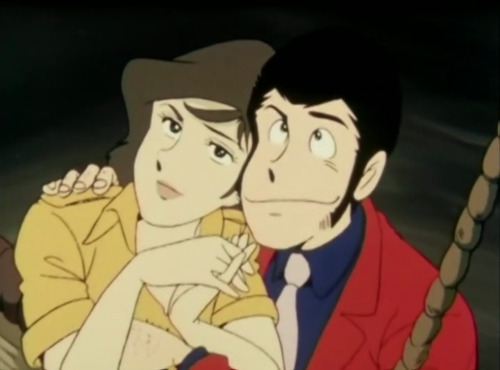
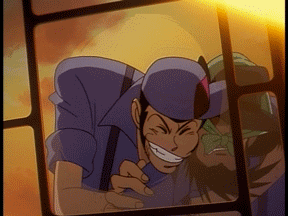
Here we tread into the dangerous territory of the theoretical, for there’s nothing overtly in the canon to bolster my theory besides conjecture. However, having followed me to this point, I’d hope you’d come a few steps further: Lupin is a character who represents, at heart, an escapist desire on the part of the audience. He’s a womanizer and a thief, a gentleman and a con. Part of the joy of watching him is the way he flouts the conventions of society, while still being (with varying degrees of moral grey) a decent person (at least to his adopted family). With that in mind, I absolutely believe he’d be involved in an open/poly relationship. He’s a guy who’s made his motto on always getting what he sets his mind to, after all. And it certainly adds a layer of ‘ah, of course’ to the snippiness of Jigen and Fujiko’s interactions.
Or, if you’d rather, it could be possible that the boundaries and definitions of Lupin’s relationships are as ever-changing as the man himself, marked by the consistency of the people in it rather than what they are to each other in the given moment – be it friends, partners, rivals, or lovers. My goal in writing this essay was mainly to prove the validity of one aspect of a multi-faceted and enduring relationship. At a certain point, these are characters who’ve been part of each other for so long, who are so beyond obviously important to one another, that there’s really nothing that needs to be said.


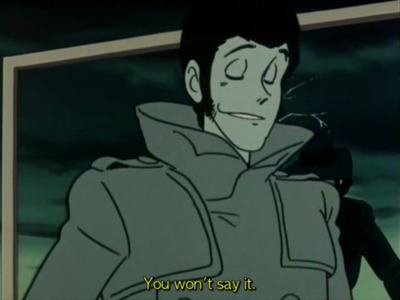
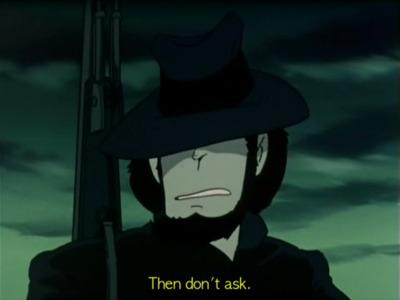
5 notes
·
View notes
Text
I already knew it was actually Lupin telling the 'story' of how everyone first met in First Contact, not Jigen, but I think the first hint is likely how Lupin acted so calm around Fujiko in their first meeting.
You know that is just a load of bullshit coming from him, considering how Part 2 Lupin acts around Fujiko even after years of knowing each other. He would be a mess in their actual first meeting.
#lupin the iii#lupin the 3rd#lupin the third#lupin iii#fujiko mine#first contact#episode 0: first contact
15 notes
·
View notes